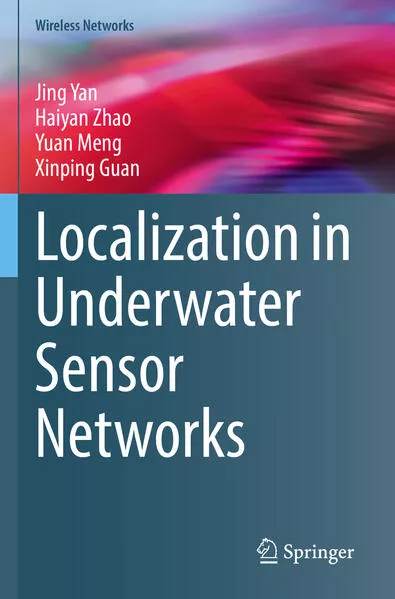Wireless Networks
Privacy-Preserving in Edge Computing
Chronologie aller Bände (1 - 2)

Die Reihenfolge beginnt mit dem Buch "Privacy-Preserving in Edge Computing". Wer alle Bücher der Reihe nach lesen möchte, sollte mit diesem Band von Longxiang Gao beginnen. Der zweite Teil der Reihe "Localization in Underwater Sensor Networks" ist am 29.10.2022 erschienen. Die Reihe umfasst derzeit 2 Bände. Der neueste Band trägt den Titel "Localization in Underwater Sensor Networks".
- Anzahl der Bewertungen für die gesamte Reihe: 0
- Ø Bewertung der Reihe: 0
Diese Reihenfolge enthält 2 unterschiedliche Autoren.
- Autor: Gao, Longxiang
- Anzahl Bewertungen: 0
- Ø Bewertung:
- Medium: Buch
- Veröffentlicht: 03.06.2022
- Genre: Programmierung
Privacy-Preserving in Edge Computing
With the rapid development of big data, it is necessary to transfer the massive data generated by end devices to the cloud under the traditional cloud computing model. However, the delays caused by massive data transmission no longer meet the requirements of various real-time mobile services. Therefore, the emergence of edge computing has been recently developed as a new computing paradigm that can collect and process data at the edge of the network, which brings significant convenience to solving problems such as delay, bandwidth, and off-loading in the traditional cloud computing paradigm. By extending the functions of the cloud to the edge of the network, edge computing provides effective data access control, computation, processing and storage for end devices. Furthermore, edge computing optimizes the seamless connection from the cloud to devices, which is considered the foundation for realizing the interconnection of everything. However, due to the open features of edge computing, such as content awareness, real-time computing and parallel processing, the existing problems of privacy in the edge computing environment have become more prominent. The access to multiple categories and large numbers of devices in edge computing also creates new privacy issues.
In this book, we discuss on the research background and current research process of privacy protection in edge computing. In the first chapter, the state-of-the-art research of edge computing are reviewed. The second chapter discusses the data privacy issue and attack models in edge computing. Three categories of privacy preserving schemes will be further introduced in the following chapters. Chapter three introduces the context-aware privacy preserving scheme. Chapter four further introduces a location-aware differential privacy preserving scheme. Chapter five presents a new blockchain based decentralized privacy preserving in edge computing. Chapter six summarize this monograph and propose future research directions.
In summary, this book introduces the following techniques in edge computing: 1) describe an MDP-based privacy-preserving model to solve context-aware data privacy in the hierarchical edge computing paradigm; 2) describe a SDN based clustering methods to solve the location-aware privacy problems in edge computing; 3) describe a novel blockchain based decentralized privacy-preserving scheme in edge computing. These techniques enable the rapid development of privacy-preserving in edge computing.
- Autor: Yan, Jing
- Anzahl Bewertungen: 0
- Ø Bewertung:
- Medium: Buch
- Veröffentlicht: 29.10.2022
- Genre: Programmierung
Localization in Underwater Sensor Networks
Ocean covers 70.8% of the Earth’s surface, and it plays an important role in supporting all life on Earth. Nonetheless, more than 80% of the ocean’s volume remains unmapped, unobserved and unexplored. In this regard, Underwater Sensor Networks (USNs), which offer ubiquitous computation, efficient communication and reliable control, are emerging as a promising solution to understand and explore the ocean. In order to support the application of USNs, accurate position information from sensor nodes is required to correctly analyze and interpret the data sampled. However, the openness and weak communication characteristics of USNs make underwater localization much more challenging in comparison to terrestrial sensor networks.
In this book, we focus on the localization problem in USNs, taking into account the unique characteristics of the underwater environment. This problem is of considerable importance, since fundamental guidance on the design and analysis of USN localization is very limited at present. To this end, we first introduce the network architecture of USNs and briefly review previous approaches to the localization of USNs. Then, the asynchronous clock, node mobility, stratification effect, privacy preserving and attack detection are considered respectively and corresponding localization schemes are developed. Lastly, the book’s rich implications provide guidance on the design of future USN localization schemes.
The results in this book reveal from a system perspective that underwater localization accuracy is closely related to the communication protocol and optimization estimator. Researchers, scientists and engineers in the field of USNs can benefit greatly from this book, which provides a wealth of information, useful methods and practical algorithms to help understand and explore the ocean.

